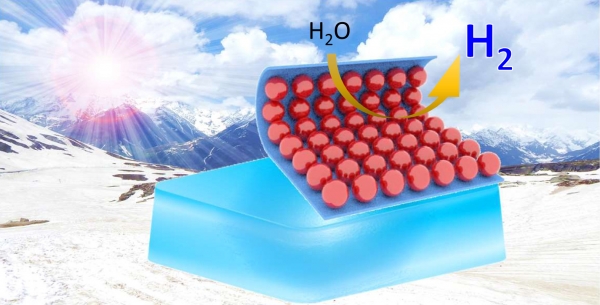
The research team of Prof. Park Moon-jeong (CHEM), Dr. Dipankar Barpuzary, and Kim Kyoung-wook (CHEM, Ph.D. Candidate) succeeded in achieving two-dimensional growth of large-area conjugated polymers with high conductivity on ice surfaces in just 8 minutes.
PEDOT:PSS is a type of conducting polymer that is widely used in displays or solar cells. However, for commercial use, it was necessary to find a way to increase surface area and conductivity while reducing synthesis time. The research team came up with a solution to these problems by synthesizing the polymers on ice surfaces.
When monomers are dropped on ice, they form a hydrogen bond with the ice and align themselves. This increases the crystallinity of the polymer formed, which in turn increases conductivity. High conductivity has been measured, which is 20 times more than that of normal spin coating procedures. The fact that well-aligned crystal structures can be made without additional doping or chemical procedures draws more attention from the academic world.
Because the polymers have been formed on ice, the template can be removed easily by melting the ice. Conventional methods, required complicated procedures to remove the template. Also, they had limits on size; using ice could create a film with a thickness of 30nm and a diameter of about 10cm.
Prof. Park remarks that “this method of polymerizing on ice is environmentally friendly and can produce highly conductive and transparent polymers,” and hopes that “this technology improves to the point where it could be used with any devices needing transparent electrodes or flexibility in the future.”


